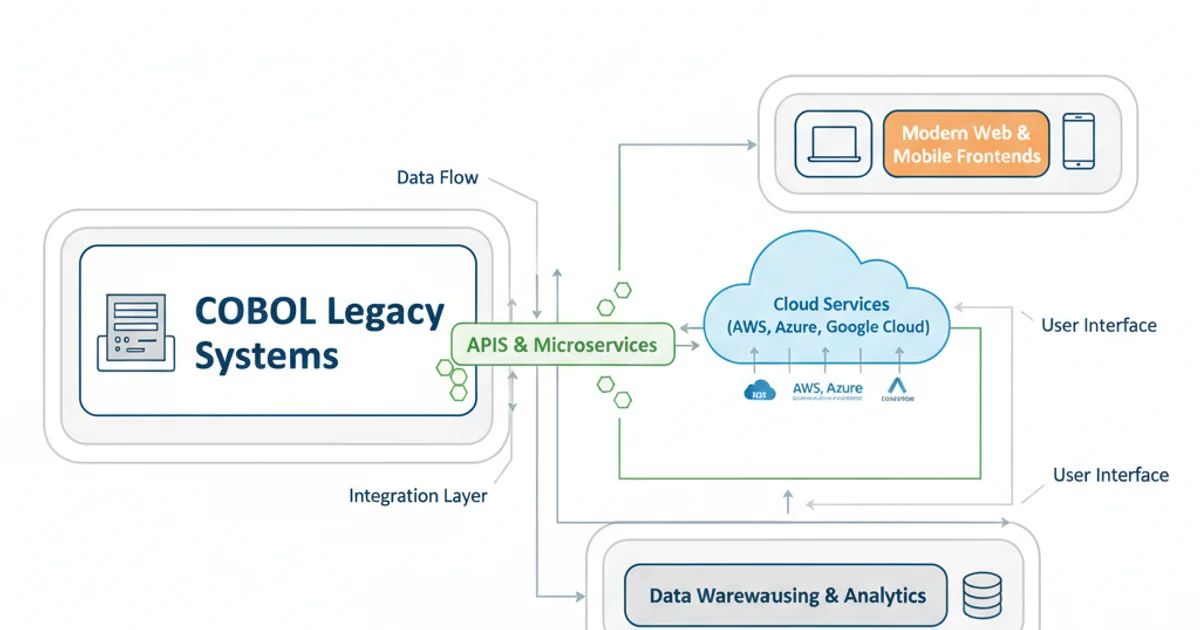Why is COBOL still a preferred language in the business world?
Categories:
COBOL's Enduring Legacy: Why It Remains a Business Powerhouse

Explore the reasons behind COBOL's continued dominance in critical business systems, from its unparalleled reliability to its massive installed base and ongoing modernization efforts.
In an era dominated by agile development, cloud-native architectures, and a plethora of modern programming languages, the mention of COBOL often evokes images of an outdated past. Yet, Common Business-Oriented Language (COBOL) continues to be the backbone of countless mission-critical systems across finance, government, healthcare, and retail. This article delves into the fundamental reasons why COBOL, despite its age, remains a preferred and indispensable language in the business world, highlighting its unique strengths and the strategic investments being made to ensure its future relevance.
Unmatched Reliability and Performance
COBOL was designed from the ground up for business data processing, emphasizing precision, robustness, and high-volume transaction handling. Its verbose, self-documenting syntax, while sometimes criticized for verbosity, contributes to code clarity and maintainability, especially in long-lived systems. The language's strong typing and decimal arithmetic capabilities are crucial for financial calculations, where even tiny inaccuracies can lead to significant problems. COBOL applications are renowned for their stability, often running for decades with minimal downtime, processing trillions of dollars in transactions daily.
flowchart TD
A[COBOL Application] --> B{Transaction Volume}
B -->|High| C[Reliable Processing]
B -->|Critical| D[Data Integrity]
C --> E[Decades of Operation]
D --> E
E --> F["Business Continuity (e.g., Banking, Insurance)"]COBOL's core strengths in business-critical operations.
Massive Installed Base and Institutional Knowledge
One of the most significant factors in COBOL's persistence is the sheer volume of existing code. Trillions of lines of COBOL code power global financial markets, government agencies, and major corporations. Replacing these systems is not merely a technical challenge but an enormous financial and logistical undertaking, often carrying prohibitive risks. The cost and complexity of migrating these systems to newer languages, coupled with the potential for introducing errors in highly sensitive operations, often outweigh the perceived benefits. Furthermore, decades of business logic, rules, and processes are deeply embedded within these COBOL applications, representing invaluable institutional knowledge that is difficult to extract and replicate.
Ongoing Modernization and Integration
Far from being a static relic, COBOL is actively being modernized. Vendors and organizations are investing in tools and strategies to integrate COBOL systems with modern technologies. This includes:
- Interoperability: Enabling COBOL programs to interact with Java, .NET, web services, and cloud APIs.
- Development Tools: Modern IDEs, debuggers, and version control systems that support COBOL.
- Cloud Deployment: Solutions for deploying COBOL applications and data on cloud platforms.
- Workforce Development: Initiatives to train new generations of developers in COBOL, often alongside other languages.
These efforts ensure that COBOL applications can continue to evolve, participate in digital transformation initiatives, and leverage the benefits of modern infrastructure without requiring a complete rewrite.
IDENTIFICATION DIVISION.
PROGRAM-ID. HELLO-WORLD.
PROCEDURE DIVISION.
DISPLAY 'Hello, COBOL World!'
STOP RUN.
A simple 'Hello World' program in COBOL, demonstrating its basic structure.

COBOL systems are increasingly integrated into modern enterprise architectures.